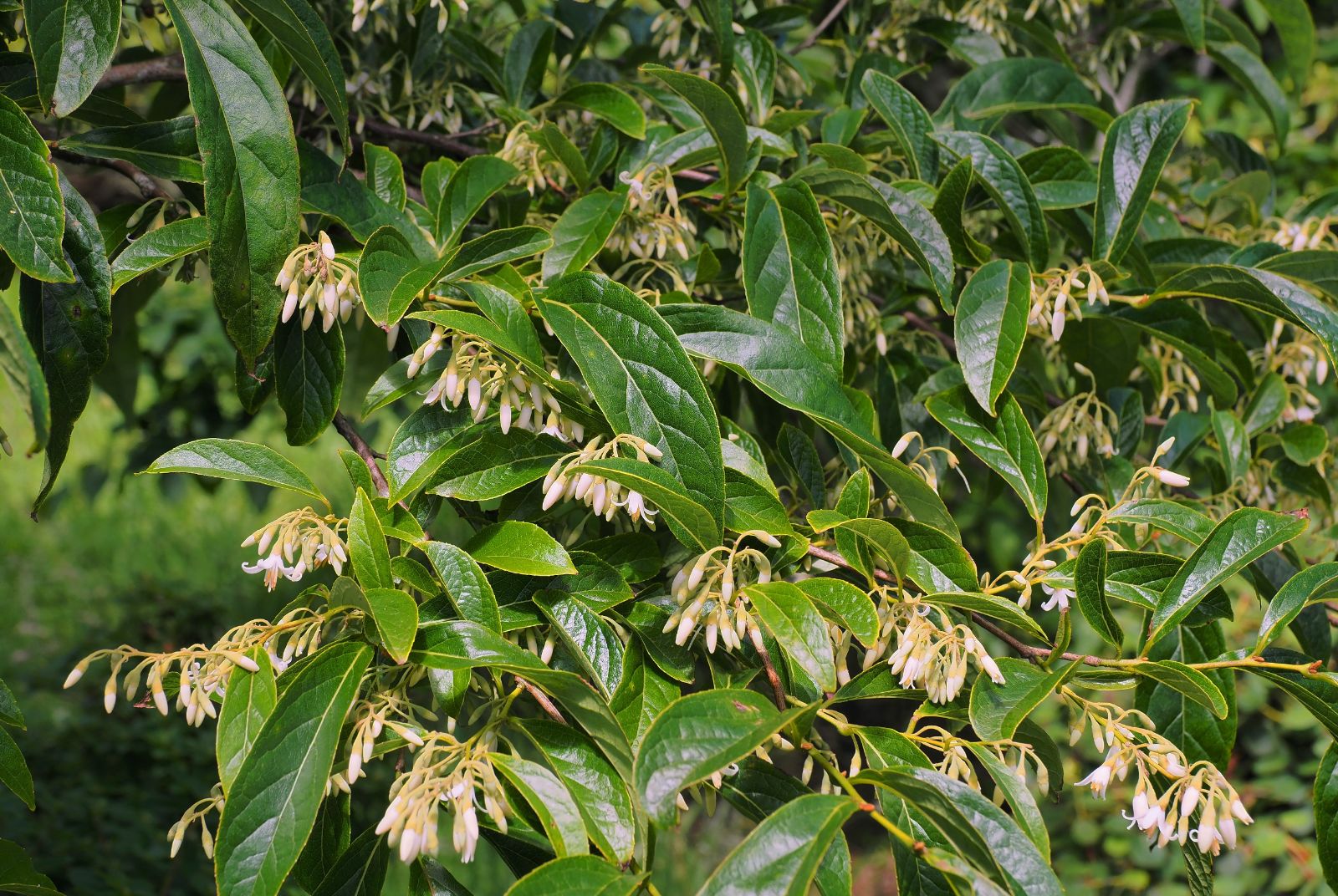Styrax serrulatus
Sponsor
Kindly sponsored by
Arabella Lennox-Boyd
Credits
John Grimshaw, Ross Bayton & Alan Elliott (2017)
Recommended citation
Grimshaw, J., Bayton, R. & Elliott, A. (2017), 'Styrax serrulatus' from the website Trees and Shrubs Online (treesandshrubsonline.
Genus
Other taxa in genus
- Styrax americanus
- Styrax calvescens
- Styrax confusus
- Styrax dasyanthus
- Styrax faberi
- Styrax formosanus
- Styrax grandifolius
- Styrax hemsleyanus
- Styrax hookeri
- Styrax japonicus
- Styrax limprichtii
- Styrax obassia
- Styrax odoratissimus
- Styrax officinalis
- Styrax platanifolius
- Styrax redivivus
- Styrax shiraianus
- Styrax suberifolius
- Styrax tonkinensis
- Styrax wilsonii
- Styrax wuyuanensis
Tree 4–12 m, 0.25 m dbh. Branchlets densely covered with brown stellate tomentum. Leaves papery, 5–14 × 2–4(–5.5) cm, ovate or oblong to lanceolate, glabrous or with sparse stellate tomentum, five to seven secondary veins on each side of the midrib, margins serrate or rarely entire, apex acuminate; petiole 0.3–0.5 cm long. Inflorescences terminal, racemose or paniculate, 3–10 cm long, with numerous flowers; pedicels 0.3–0.8 cm long. Flowers 1–1.3 cm long; calyx densely yellow-tomentose, five-toothed, corolla tube 0.2–0.3 cm, lobes 0.7–0.9 cm, oblong to lanceolate, stamens shorter than corolla. Fruit ellipsoid to ovoid, 0.8–1.6 cm long, densely covered with grey-brown tomentum. Flowering March to May, fruiting June to November (China). (Hwang & Grimes 1996).
Distribution Bhutan Myanmar China southern Guangdong, southern Guangxi, Hainan, southeast Xizang, southern Yunnan India Laos Malaysia Malay Peninsula Nepal Thailand Vietnam Taiwan
Habitat Forests between 500 and 1700 m asl.
USDA Hardiness Zone 7-8
Conservation status Not evaluated (NE)
Taxonomic note The name S. serrulatus is sometimes incorrectly given as a synonym of S. japonicus.
The wide natural range of this plant is not matched by its presence in cultivation, where it is extremely scarce. Two specimens have grown in the Hillier Gardens since the 1970s and seem to be correctly named, the larger one currently 5 m tall with a spread of about 8 m, with several stems (A. Coombes pers. comm. 2008). The species has also been in cultivation at the JC Raulston Arboretum since 1994, when it was received from Sonoma Horticultural Nursery, California. When seen in May 2006 it was a somewhat sparse multistemmed bush, 2.5 m tall, and had just finished flowering.

